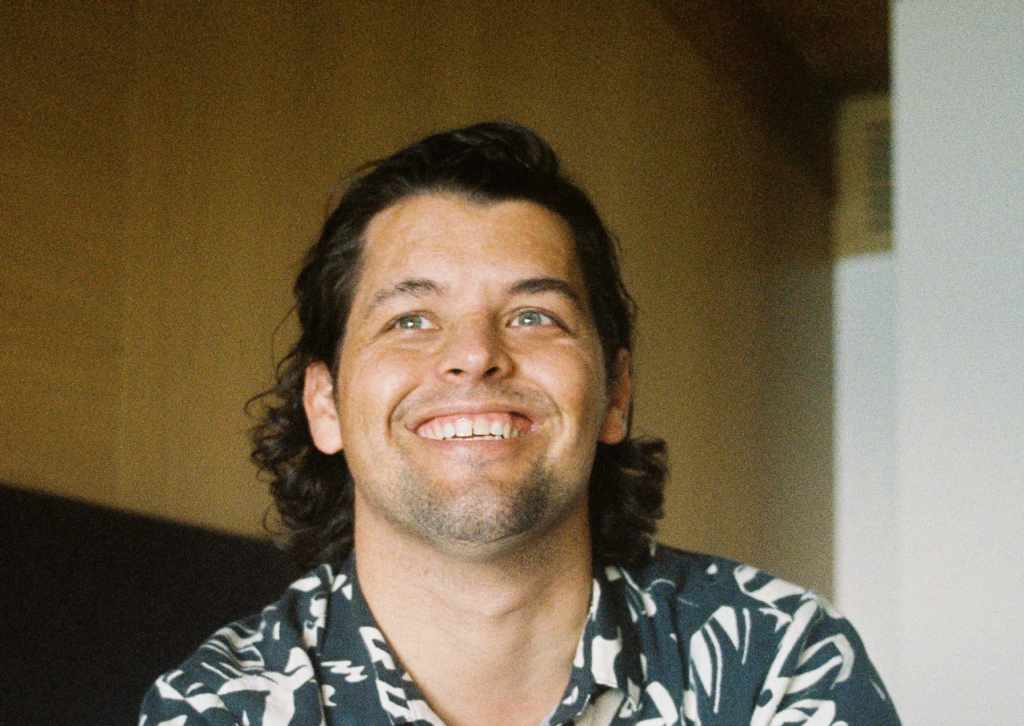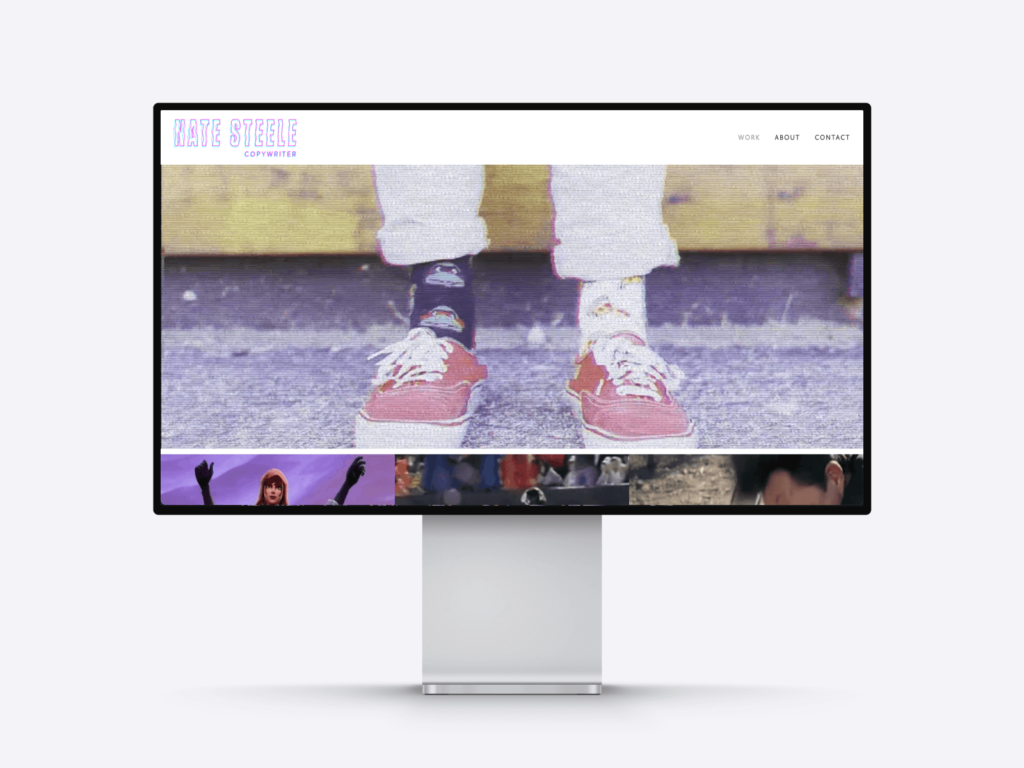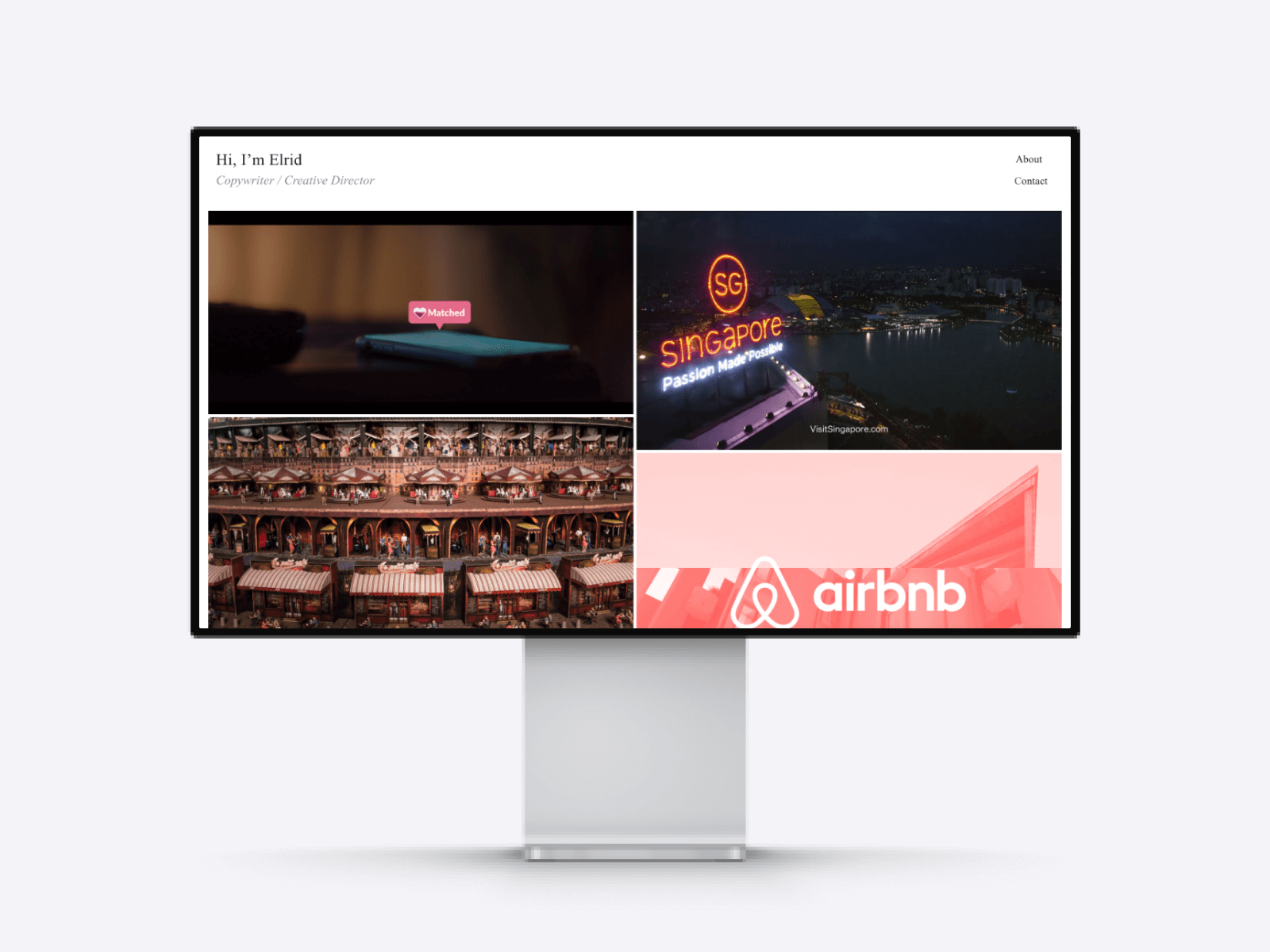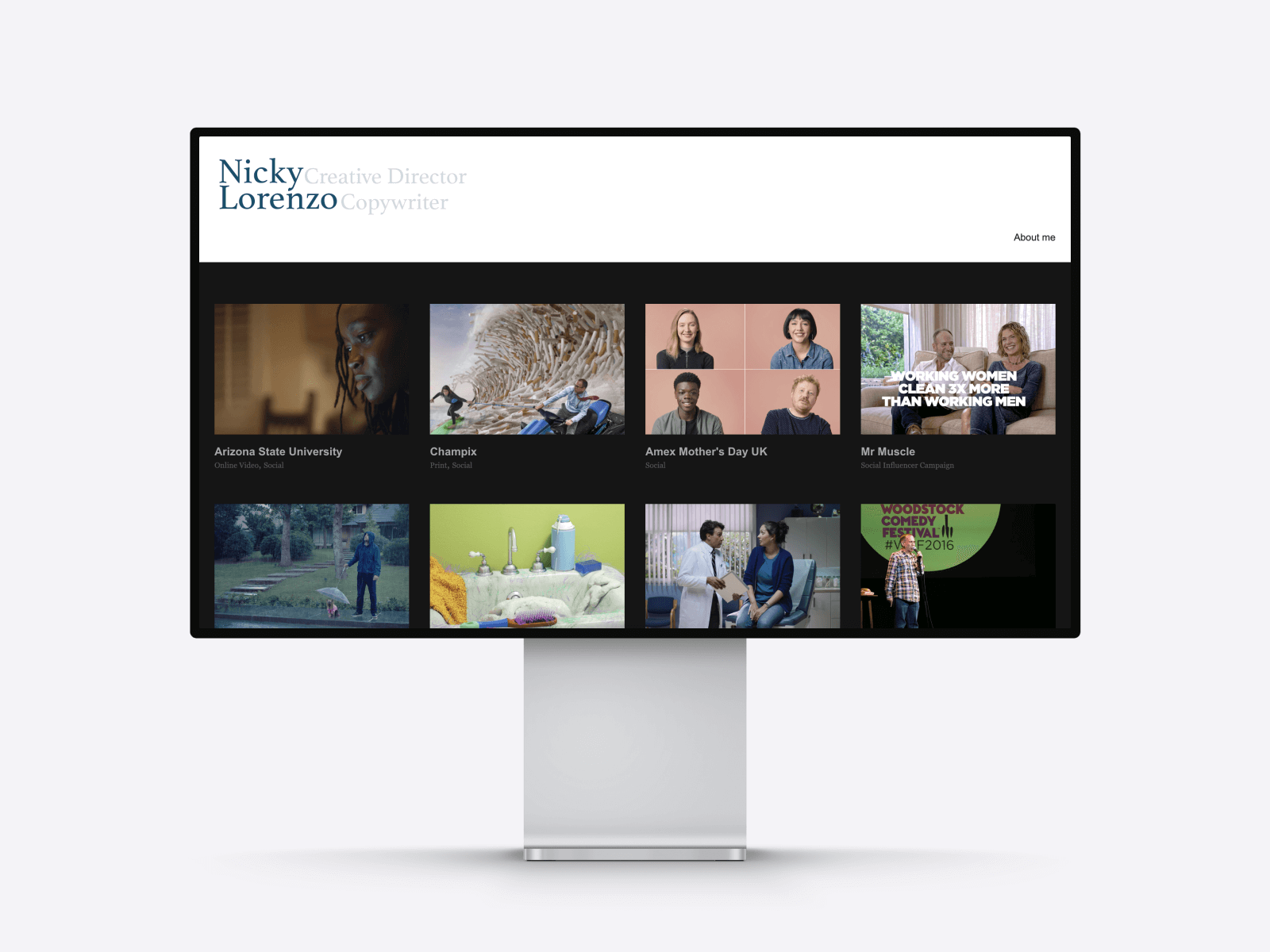Focus on the idea, hit that human truth. Interview with Nate Steele, Deutsch LA.
Do you remember when Wendy’s was smashing freezers in Fortnite? Or have you ever used Gatorade GIFs when talking about football? We’re happy to introduce the brilliant mind behind these campaigns (and many more) today: Nate Steele.
Nate’s currently an associate creative director at Deutsch LA and he sat down with us to talk about becoming an ACD, his favorite projects, and the must-haves of copywriter portfolios.
Read on for behind-the-scenes insights about his award-winning Wendy’s and Gatorade campaigns, and find out what Nate’s looking for in the copywriter they’re going to hire next.
Can you tell me a little bit about how you became a copywriter and why you chose this path?
I was going to school at Brigham Young University, and I wasn't sure what I was going to major in yet. In my freshman year I decided to take a communications 101 class, and every three weeks we would focus on a different area of expertise within the communications world. The first weeks were about broadcast journalism, PR, and then print journalism.
Then finally we got to advertising. A professor who had worked in advertising agencies was now our professor, and he came in to kick off the advertising portion of the class. He just said: if you want to go to work every day in jeans and a T-shirt, then being a creative at an advertising agency is the job for you. That definitely piqued my interest.
But he also said that if you feel like you have ideas and you can see them in your mind clearly and vividly... But you're not the kind of person who can sit down and draw that out as a picture, then copywriting is what you want to get into. Because the biggest part of copywriting in advertising is your ideas.
And that was me. I can't draw. That sounded exactly like me, so I went to the advertising program and was lucky enough to get in. I worked on a bunch of spec work, created a student portfolio, and was lucky enough to get an internship right out of college.

And then you started working at the agencies and now you're an associate creative director...
Yes, I started off as an intern and then a junior copywriter at Leo Burnett, in Chicago. Then I kind of bounced around different agencies: in West Hollywood, Kansas City, and then back out here to Los Angeles and eventually became an associate director.
And how is your work now as an ACD different from when you were a copywriter?
For the most part, it's pretty much the same. Sometimes I’m leading, and sometimes I and my art director partner are the lead creatives. Coming up with the ideas is on us and I write any copy that's needed: headlines, scripts, or anything else. I’ll make sure that we have everything we need there.
But I'd say the biggest difference now is that I'm able to manage junior teams —right now there's one junior team below us. It's their first job out of college, so it's been really awesome to help them find their footing and get to know this industry. To help elevate their ideas and their copy, as opposed to saying: here's my idea and this is what we're going to go with. It's nice to help out, manage and hopefully mentor them to a place where they're making some work that they're proud of.
Can you tell us a little bit about your creative process when you're assigned a new project?
Every project is different. Sometimes the project will really speak to you. As you're getting briefed, you have a flood of ideas, and you're just trying to write them all down as they come up.
But there are other assignments, where you're not sure where to begin, maybe you don't understand every aspect of it... So it's gonna take a couple of times, of reading and rereading the brief, and getting to know the assignment, the target market, or the message all over again.
At first, I like to start on my own. See how far I can get. Jot down any ideas, first thoughts, whether I think they're good or bad. Anything. I'll just get them out. I'll go as far as I can until I feel like I'm starting to get stuck.
Then I'll get together with my partner, and we'll bounce ideas back and forth. Sometimes I'll say the idea that I had out loud, and I think: oh well, this isn't a good idea but I'll say it anyway. And it might spark something on their end. And other times we realize: well, now we know that's not a place you need to go.
It's a good, sometimes a very humbling, part of the process. There were plenty of times when I thought I had solved that brief and that I had a winning idea. Then somebody said: oh that was done five years ago. It's good to be open and willing to start over, to reshape your ideas and rethink your ideas.
I wanted to ask you about some of your favorite projects, but before I do that I gotta say: the Wendy's activation that you did was brilliant! How did the idea come around?
The Wendy's activation is one of my favorite ideas. We had been with this client, Wendy’s, for years at that point. And over the several years, we had gained their trust to kind of explore these less popular or at least more unknown platforms. So they were willing to hand the reins over to us creatively.
As a creative team, we knew we wanted to do something with gaming. We knew we’d want to stream it on Twitch, but we weren't exactly sure what our first step into the gaming world would be as a brand. We also knew that gamers are very wary of brands coming into their world. That they're very quick to call out brands for interfering with gameplay —and they have every right to call that out. They're a very critical audience.
Then Fortnite came out with an activation called Food Fight between Team Pizza and Team Burger. Burger King, of course, tweeted out that they were Team Burger and DiGiorno Pizza tweeted out: “do we even have to say it? We're Team Pizza”.
We were thinking about what would be a reason for Wendy's to join Team Pizza. Me and my partner were playing the game on our phones, trying to figure out what we can do within the game. Then we saw that the burger restaurant had freezers. And Wendy's doesn't do frozen beef. So that was our way in.
We decided to go in there, not to really play the game, but to destroy these freezers. Because burger restaurants should not have freezers. That's basically all it was because it was a short activation within the game. The way the internet and social media work, the conversations come and go, and these trends go quickly. So if you're not jumping on it right away, you're gonna miss out.
We came up with the idea on Monday, Tuesday we presented it to the client. Wednesday they had some feedback, and Thursday we were playing the game and streaming. It's really unheard of to get a project that ends up being that big to launch that quickly. But because we have that trust with our client, they were willing to trust us to explore these less known platforms. So we were able to get in there, have some fun and people took notice. Which is great because it was a lot of fun to play video games at work.
And then the rest is history.
The rest is history, yes.
https://player.vimeo.com/video/340312730?byline=0&portrait=0
Wendy's – Keeping Fortnite Fresh Case Study from Nate Steele.
Is there any other project that stands out for you that you really enjoyed the last few years?
The activation that we did for the Super Bowl with Gatorade was a lot of fun. It was another idea that was born based on how people on the Internet react and talk to each other. Knowing that when people are watching the Super Bowl, they're not just watching it. They're also watching Twitter, they're texting their friends, and they got another screen going on while they watch the game.
So how do we interject ourselves into that conversation without paying millions of dollars for a TV spot? By partnering with Giphy and taking hold of those popular tagged GIFs. Things like touchdown, interception, or fumble. When people search for those GIFs on their Giphy keyboard, we're the first thing to pop up. It was a seamless way for us to inject our brand into their conversation without them even realizing it.
It saw a lot of success and a lot of people used them. Creating it was a lot of work, it was very tedious —but it was a lot of fun. And it was a really cool feeling that we pulled something that kind of crazy, that kind of detailed off.
https://player.vimeo.com/video/268059684?byline=0&portrait=0
Gatorade Super Bowl – GIForade Activation from Nate Steele.
How long did that project take for you guys? That was a lot of GIFs!
Yes, that project took a long time. It took at least four or five months from conception to the actual Super Bowl Sunday. It was a lot. Not only just coming up with the GIFs, but booking the talent, finding out which popular GIFs we wanted to recreate, working with artists to use existing footage and make them entertaining.
Then there are so many different layers of approval. Not only do you have to get approval from the athlete, but you also have to get approval from their agent, from the NFL, and from the NFL Players Association. So we had some GIFs that made it through three of those approvals and then the NFL or the NFL Players Association said no, for whatever reason.
It was crazy, keeping track of all those different GIFs, where they were in the approval process. Let alone creating them. So it was a lot, but we were able to pull it off.
Definitely not a Monday to Thursday kind of thing.
Definitely not. That one had to be a lot more organized.
You have a lot of really cool projects in your portfolio, and a really cool portfolio website. Do you think it's important for copywriters to have one?
Absolutely. I think you'll always hear people kind of talk about improving their brand or getting their brand out there. These days brands are seen as people and people are seeing themselves as brands.
So to have a place where you can go and get a first impression or a quick look at who someone is is crucial. To get a sense of their style or craft, what they've accomplished, and the work that they've done, all in one easy digestible space.
A lot of times when people are looking to hire copywriters or creatives in general, they go to their website to get a good feel for who they are, and what work they’ve done. And if you don't have a website, there's a great chance that you're going to get overlooked, even though you might have that skill set that would be perfect for that particular project.

Nate's portfolio website - check it out at natesteele.com
As Associate Creative Director, do you now take part in choosing or hiring new copywriters to join your team or agency?
Yes, especially if they're going to join our team. They'll send us their portfolio (their book), and we'll go through one or two of their projects. And if we're not feeling it, we'll toss it aside.
You really don't have a ton of opportunities to make a lasting impression. So you want your portfolio and your work to be able to put the best foot forward on your behalf.
We'll go through portfolios and then if we like the portfolio, we'll interview them. Because a lot of people can do a lot of great things creatively, but at the end of the day, this is an industry where sometimes you're going to be working late hours, and you're going to be with these people for hours on end. So you need to know that you're going to be able to get along with them. And that you're going to be able to mesh with them creatively, to elevate their ideas.
Is there anything that you're looking for in a portfolio specifically?
I really try to focus on the idea. On what they did to hit that human truth that speaks to everybody. Did they do it in a way that I've never seen? Or in a way that makes me think: I wish I had done that or I would love to have this in my creative director portfolio. That kind of out-of-the-box thinking, looking at problems from a different perspective and solving them in a unique way. Being able to do so, simply and quickly, is probably the first thing I look for.
Is there anything else in your mind about being a copywriter that you haven't mentioned?
At the end of the day, we're not doctors. We're not saving the world, but I still have been able to find opportunities within the work I've created to focus on people and communities, ethnicities, or genders that I feel are marginalized or maybe not as represented as they should be. I don't have a lot of sway within the industry as a whole, but from my little corner I can do a little bit and I try to really focus on that every single day.
Whether it's casting people, whether it's hiring people. People with voices, perspectives, and life experiences that are different from my own. At the end of the day if I can say that I did that, even if I didn't win an award or sell this big Super Bowl spot... I am so much prouder that I was able to push for those voices and those people. That I could elevate them, help them, and get them into a place where they can get their voice and their creativity out to the world.
Check out Nate's work below
You can find Nate's work on his website at natesteele.com —or connect with him on LinkedIn.
Create your copywriter portfolio with Copyfolio
Ready to show off your writing skills and out-of-the-box creativity? Create an online portfolio website with Copyfolio in just a matter of minutes. Select your template, choose a color palette and font combo you like, and you're ready to go. Combined with the case study writing prompts, portfolio building has never been easier.



